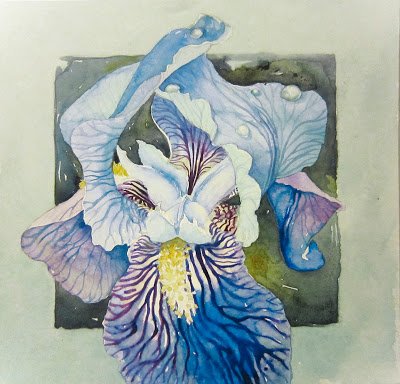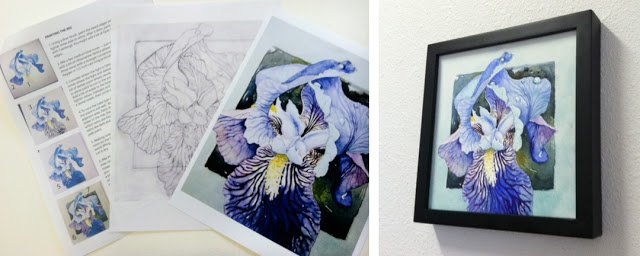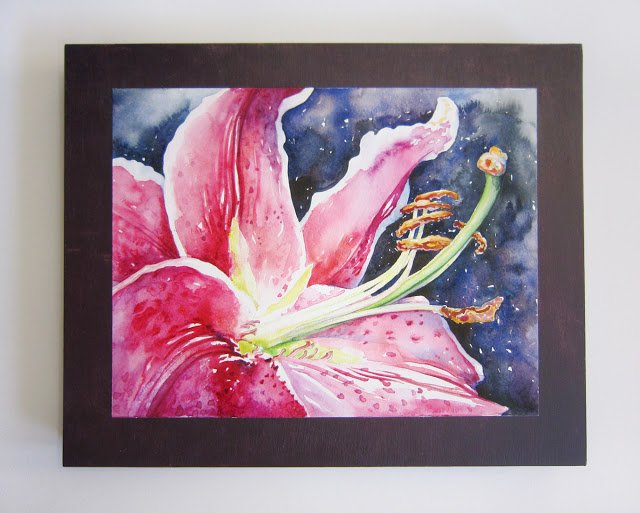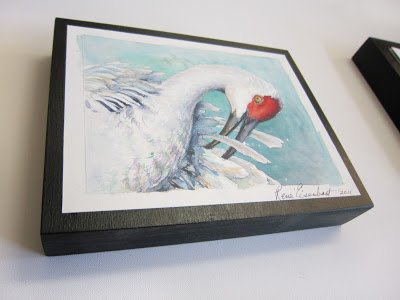While visiting my sister, Theresa, in Texas just before Thanksgiving, I prepared art for 12 paintings, each 10 x 10 inches, sketching them on Crescent watercolor board. I chose this size because I’d found a source for the gallery frames. They came with plexiglass, which I’m just tossing and will use acrylic mediums to protect the art.
2 Iris, 2 Zinnia, 2 Trillium, 2 Rhododendron, 2 Peony, and 2 Lily — to make an even dozen.
I decided to record my process as I painted the first two, and make step-by-step lesson plans from the notes and photographs. Theresa was thinking about a large Iris painting for her house, so I started with the Iris.
Here is a finished painting…
And the second one, which is the one I’ll be working with…
The step-by-step lesson plan… Framed art……….
The IRIS photo was then a useful tool, using Photoshop and another photo of my sister’s wall to create a virtual image of what the painting would look like, true to size, if it were painted 50 x 40 inches. The “small” painting in the before photo is actually a full sized sheet of watercolor paper.
Notice the changes in the after photo from the iris painting above… dark background and vertical crop. When light/dark values are determined during preliminary work, it’s much more likely that a painting will be successful. Considering the painting time invested with a large piece, both thumbnail sketches and small study paintings are well worth the effort.
BEFORE AFTER








